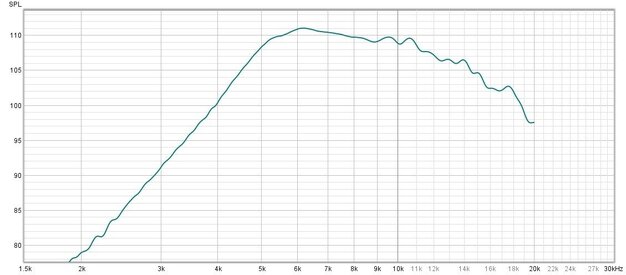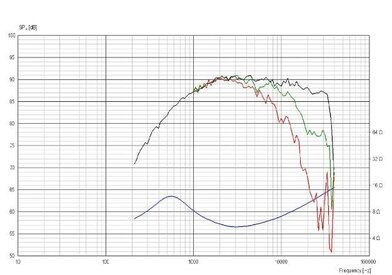Rolledmyown
Registered
Thread Starter
- Joined
- Apr 12, 2023
- Posts
- 6
More
- Preamp, Processor or Receiver
- Wadia Di122,,
- Main Amp
- Home made
- Computer Audio
- JRiver, Windows (Sony) laptop
- Front Speakers
- Home made, completely, except for drivers
- Subwoofers
- SVS PB1000
Hi folks, I'm doing some tweaks to my home-made speakers. A number of years ago I bought a pair of Scan Speak D2905/930000 tweeters, which were reputed to be pretty flat in their response well beyond 25K. When I installed them I found that my Behringer 8024 Ultracurve Pro couldn't perform an GEQ on those tweeters at 20K, at which point their output was dropping like a stone. I still have those tweeters and am now using REW to attempt PEQ on my system (no longer with the Behringer installed, I use a laptop PC running JRiver MC31,and a Wadia di122 decoder as DAC and preamp). I found using REW that the output from the tweeter still falls like a stone, as can be seen below (this is a near field, on axis measurement, with only the tweeter connected via its crossover to my power amp. By 22K the roll-off is almost vertical). I'm using a UMIK usb microphone, with its proprietary calibration file (with my Behringer I used similar but different microphone from the same manufacturer). Initially I thought that maybe I had done something awful with my home-made crossovers (e.g., a bad impedance compensation or too much padding) or perhaps I've not attached them to the baffle adequate.. But maybe all is well and what I'm seeing is a measurement error and I don't have to get my soldering iron out!
I've included below the manufacturer's specs for the tweeter. I'm old enough that I can't hear well above 15K anyway, so I'm sure I'm not 'missing out' when it comes to the reproduction of my speakers, but I certainly want to know if I've made a mistake in installation of my tweeters. I've had a search of the specs for my Wadia and I think it says that its output is flat to about 45K. Is my laptop (pre 2010 vintage Vaio) the culprit?
PK
I've included below the manufacturer's specs for the tweeter. I'm old enough that I can't hear well above 15K anyway, so I'm sure I'm not 'missing out' when it comes to the reproduction of my speakers, but I certainly want to know if I've made a mistake in installation of my tweeters. I've had a search of the specs for my Wadia and I think it says that its output is flat to about 45K. Is my laptop (pre 2010 vintage Vaio) the culprit?
PK
















